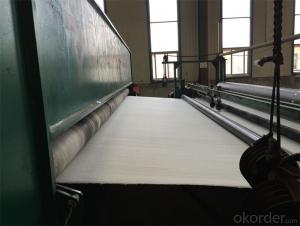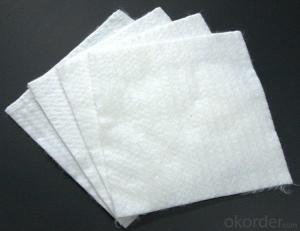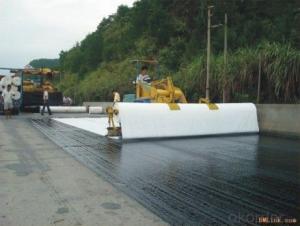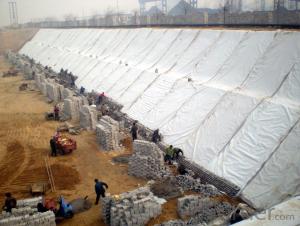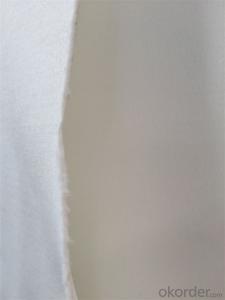PP/PET Non Woven Geotextile with High Strength
- Loading Port:
- Qingdao
- Payment Terms:
- TT OR LC
- Min Order Qty:
- 5000 m²
- Supply Capability:
- 100000 m²/month
OKorder Service Pledge
OKorder Financial Service
You Might Also Like
Geotextile Introduction
PP/PET Geotextile has excellent permeability, acquired, durability, which can be widely used in railway ,highway, movement hall,Dams,hydraulic structures hence hole, coastal shoal, reclamation,environmental protection and other projects. The main products are Synthetic staple fibers needle punched nonwoven geotextiles and split film yarn woven geotextiles.
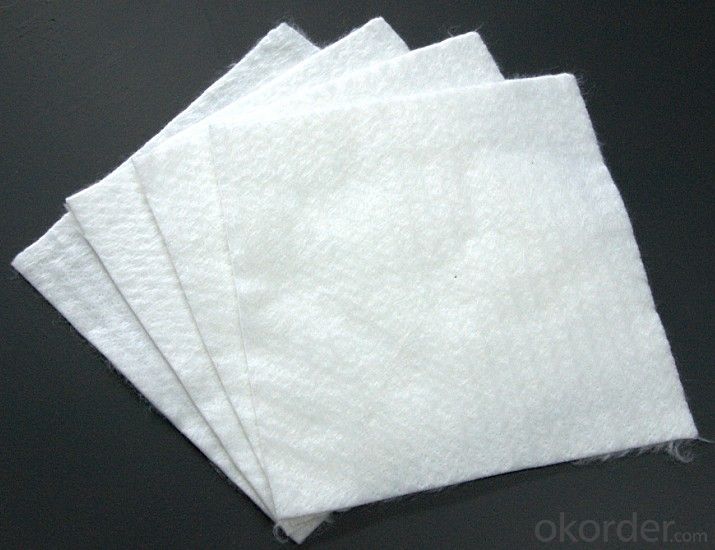
Geotextile Specification
1. Weight: 100g~1500g
2. Width: 1m ~ 7m

Product Package:
Packing: Plastic film inside & Woven bag outside.
Shipping: About 15 days after receipt the deposit
 Geotextile Application
Geotextile Application
Filtration
Separation
Adding
Protection
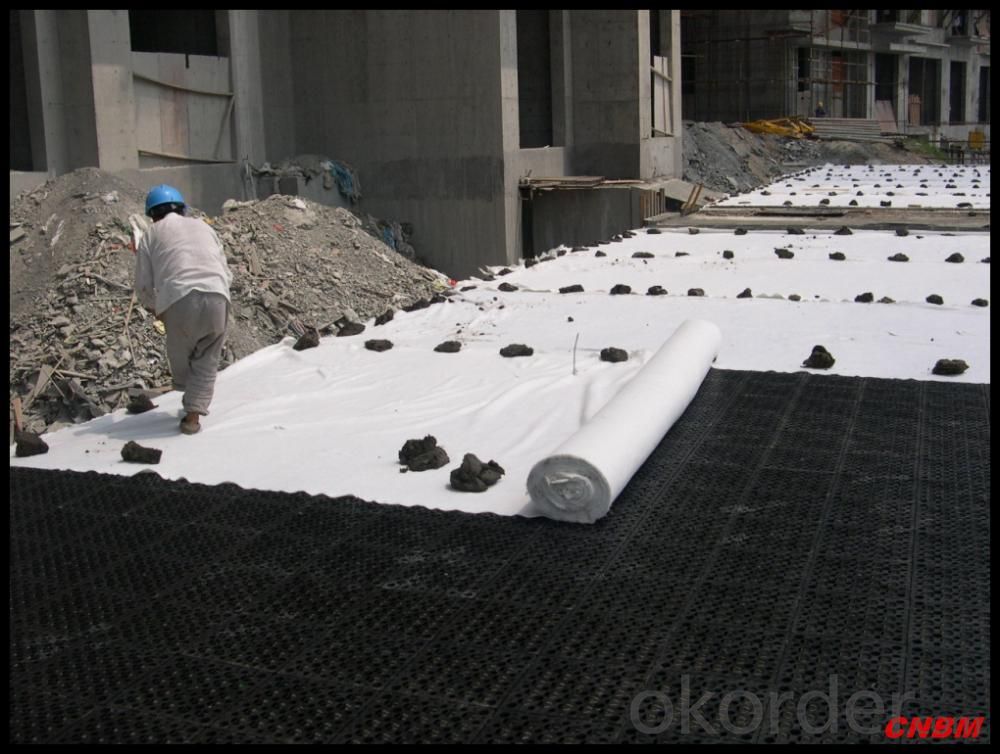

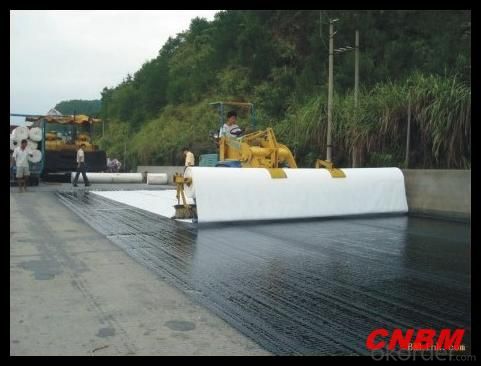
FAQ:
Q: What kind of payments does jenor support?
A: T/T, L/C, Cash are accepted.
Q: Do you charge for the samples?
A: Accordeing to our company policy, the samples are freee, we only charge the freight fee. And we will return the freight fee during the next order.
Q: Can you produce according to customers' design?
A: Sure, we are professional manufacturer, OEM and ODM are both welcome.
Q: Do you have other products?
A: Yes, please check the pictures:
- Q:Can geotextiles be used in erosion control blankets?
- Yes, geotextiles can be used in erosion control blankets. Geotextiles are often used as a material in erosion control blankets to provide stabilization and reinforcement against soil erosion. They help to prevent sediment runoff and promote vegetation growth, making them effective in erosion control applications.
- Q:Production of acupuncture carpets, geotextiles, warm flakes, paper blankets, air filter materials, the main raw material is what? why?
- The main raw material is polyester, polyester is the basic composition of polyethylene terephthalate, it is also known as polyester fiber (PET), the long chain of its chemical formula H (OCH2CCOCO) NOCH2CH2OH, the relative molecular weight is generally ~ The In fact, there are a small amount of monomer and oligomers present. These oligomers have a low degree of polymerization and are present in an annular form. Polyethylene terephthalate can be obtained by polycondensation of terephthalic acid (PTA) and ethylene glycol (EG) by direct esterification of ethylene terephthalate 9BHET. From the composition of polyester molecules, it is composed of short fatty hydrocarbon chain, ester, benzene ring, terminal alcohol hydroxyl group. Polyester molecules in addition to the existence of two hydroxyl groups, there is no other polar groups, and thus polyester fiber hydrophilic poor. Polyester molecules contain about 46% of the ester group, ester groups can be hydrolyzed at high temperatures, thermal cracking, the case of alkali is the saponification, the degree of polymerization reduced; polyester molecules also contain aliphatic hydrocarbon chain, it can make polyester molecules have a certain But because the polyester molecules can not rotate the benzene ring, so the polyester macromolecules are basically rigid molecules, molecular chains easy to maintain linear. Therefore, polyester macromolecules in this condition is easy to form crystals, so the polyester crystallinity and orientation is higher.
- Q:What are the factors to consider when selecting a geotextile?
- When selecting a geotextile, there are several factors to consider. Firstly, the application or purpose of the geotextile is important. Different geotextiles are designed for specific functions such as filtration, separation, drainage, or reinforcement. Understanding the specific requirements of the project and matching them with the appropriate geotextile is crucial. Secondly, the site conditions need to be evaluated. Factors such as soil type, slope stability, groundwater levels, and expected loads or stresses should be considered. The geotextile should be able to withstand these conditions and provide the necessary performance. Thirdly, the durability and longevity of the geotextile should be assessed. Factors like UV resistance, resistance to chemicals or biological degradation, and the expected lifespan should be evaluated to ensure that the selected geotextile can withstand the anticipated environmental conditions. Additionally, the installation and maintenance requirements should be taken into account. Some geotextiles may require specialized equipment or techniques for installation, while others may need periodic monitoring or maintenance. Understanding these requirements is essential for a successful project. Lastly, cost-effectiveness is an important factor. While it is crucial to select a geotextile that meets the project requirements, it is also necessary to consider the associated costs. Evaluating the initial cost, as well as the long-term benefits and potential savings, helps in making an informed decision. In summary, the factors to consider when selecting a geotextile include the specific application, site conditions, durability, installation requirements, and cost-effectiveness.
- Q:How do geotextiles help with erosion control in coastal dunes?
- Geotextiles help with erosion control in coastal dunes by acting as a barrier that prevents the loss of sand and sediment. They are placed on the surface of the dunes to stabilize the sand and provide reinforcement, reducing erosion caused by wind and water. Additionally, geotextiles promote the growth of vegetation by trapping sand and providing a stable base for plants to establish roots, further enhancing erosion control efforts.
- Q:Geotextile geotextile geotextile construction geotextile specific application
- Geotextile is a large number of textile materials used in civil engineering in recent years, geotextile, with excellent isolation, filtration, drainage, reinforcement, protection, closed and other functions. Geotextile, is widely used in highways, railway subgrade, airport runway, river bed, dam construction and reclamation, flood control and other major projects. Geotextile use: water conservancy construction: seawall, river embankment, lake embankment project; reservoir reinforcement project; beach reclamation project; flood control. Transportation engineering: soft foundation reinforcement treatment; slope protection; drainage system; green isolation zone. Power plant construction: nuclear power plant base, thermal ash dam, hydropower station and other projects. Port waterway works: port terminals, locks, waterway management and other projects. Other works: tunnel, subway, construction, tailings treatment; landfill and other projects
- Q:Can geotextiles be used in slope stabilization projects?
- Yes, geotextiles can be used in slope stabilization projects. Geotextiles are often used to reinforce and stabilize slopes by providing strength and stability to the soil. They can help prevent erosion, control surface water runoff, and improve the overall stability of the slope.
- Q:Can geotextiles be used for erosion control in river channels?
- Yes, geotextiles can be used for erosion control in river channels. Geotextiles are permeable fabrics that are designed to stabilize soil and prevent erosion by providing structural support and enhancing filtration. They can be installed in river channels to control erosion by reinforcing the riverbanks, protecting against scouring, and promoting vegetation growth. Geotextiles can effectively reduce sediment transport and maintain the stability of river channels, making them a suitable option for erosion control in these environments.
- Q:Are geotextiles suitable for use in chemical containment facilities?
- Geotextiles are generally not suitable for use in chemical containment facilities as they do not provide adequate chemical resistance.
- Q:Can geotextiles be used in landfill construction?
- Yes, geotextiles can be used in landfill construction. They are commonly used as liners, covers, and drainage materials in landfills to prevent soil erosion, control water flow, and improve stability and performance of the landfill structure.
- Q:What are the different geotextile puncture resistance test methods?
- There are several different geotextile puncture resistance test methods, including the ASTM D4833 puncture test, ASTM D6241 puncture test, and the ISO 12236 puncture test. These tests involve applying a force to a geotextile specimen using a puncture probe or cone, and measuring the force required to puncture the material. These methods help determine the puncture resistance and durability of geotextiles for various applications.
1. Manufacturer Overview |
|
|---|---|
| Location | |
| Year Established | |
| Annual Output Value | |
| Main Markets | |
| Company Certifications | |
2. Manufacturer Certificates |
|
|---|---|
| a) Certification Name | |
| Range | |
| Reference | |
| Validity Period | |
3. Manufacturer Capability |
|
|---|---|
| a)Trade Capacity | |
| Nearest Port | |
| Export Percentage | |
| No.of Employees in Trade Department | |
| Language Spoken: | |
| b)Factory Information | |
| Factory Size: | |
| No. of Production Lines | |
| Contract Manufacturing | |
| Product Price Range | |
Send your message to us
PP/PET Non Woven Geotextile with High Strength
- Loading Port:
- Qingdao
- Payment Terms:
- TT OR LC
- Min Order Qty:
- 5000 m²
- Supply Capability:
- 100000 m²/month
OKorder Service Pledge
OKorder Financial Service
Similar products
New products
Hot products
Related keywords
